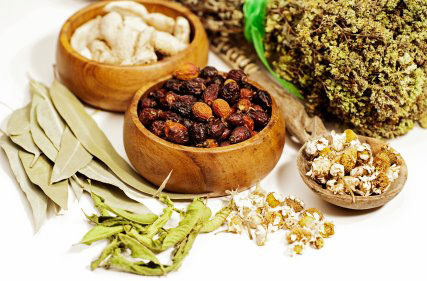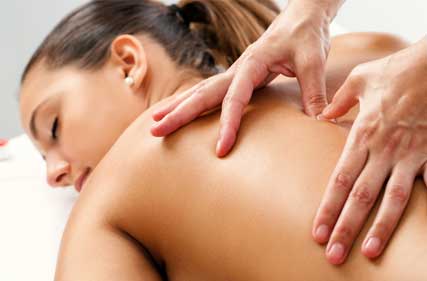Naturopathy
Naturopathy, also known as Naturopathic Medicine or Natural Medicine, is an alternative medical system that focuses on natural remedies and the body’s vital ability to heal and maintain itself. The Naturopathic philosophy favours a holistic approach comprising many different treatment modalities such as: diet/nutrition, lifestyle, herbal medicines, flower essences, homoeopathy, body work and stress management techniques etc.
The doctor of the future will give no medicine but will interest his patients in the care of the human frame, in proper diet, and in the cause and prevention of disease.
THOMAS A. EDISON
Naturopathy looks at each individual and says: “what do you need to give yourself optimum health”.
Naturopathy looks for causes of disease rather than just treating symptoms. It aims at restoring balance in the body.
Naturopathic medicine is more than a system of healthcare; it is a way of life. It is a distinct system of medicine that stresses health maintenance, disease prevention, patient education, and patient responsibilities in contrast to treatment of disease.

HERBAL MEDICINE
Herbal medicine is an ancient, worldwide system of medicine using plants to prevent and cure disease.
To the medical herbalist, an herb is any plant of medicinal value. There are at least 350,000 known species of plants.
The use of plants to cure disease is older than man himself. Animals ate plants of certain kinds when they fell ill and indeed they still do. Man has always been dependent on the plant world for his nutritional survival and especially so as three of the fatty acids essential for life (linoleic, linolenic and arachidonic acids)are found almost exclusively in the plant world.
Ever since records have been kept, there have been herbal medicines. The Chinese had sophisticated pharmacopoeias (list of useful drugs) in 3000 BC. In 1963 the contents of a grave in Iran revealed that plants were used medicinally as long ago as 60,000 years ago. William Caxton printed hundreds of medical textbooks in the fifteenth century and as more people could read and learn about herbalism, interest grew until the publication of probably the greatest work in English on this subject, Nicholas Culpeper’s Complete Herbal, in 1653.
The death knell of herbal cures was probably sounded by Paracelsus, the Swiss physician, who lived in the sixteenth century. He and the other ‘alchemists’ that followed put their faith in inorganic remedies such as mercury and antimony in addition to herbal cures. This was the birth of the chemical approach to medicine that we live with today. The fashion in drug treatment was to concentrate on inorganics and as a result herbal remedies became quaint oddities.

Fascial Kinetics
Fascial Kinetics is a very effective but gentle system of soft tissue manipulation. Fascial kinetics is the name given to the work taught by Russell Sturgess and is based on the soft tissue philosophy of Mr Tom Bowen. It is also known as the Bowen Technique after the person who developed this unique and amazing modality.
No pain much gain
Fascial Kinetics represents a whole new paradigm in soft tissue manipulation. Whereas there has been a prevalent attitude amongst body workers and their clients of “no pain no gain”, experience with Fascial Kinetics has demonstrated “no pain much gain”.
User friendly for client and therapist
It addresses fascial and connective tissue mobilisation in a much more gentle and less intrusive manner than the traditional deep tissue techniques. It thus avoids any possibility of over treating and tearing fascia instead of stretching it. Not only is Fascial Kinetics more gentle on the client but it is also ‘user friendly’ for the therapist, and without compromising results.
Benefits many conditions
Fascial Kinetics can be used to treat musculo-skeletal problems, sports injuries and a wide variety of conditions such as Asthma, Migraine, Hay fever, Colic, Bed-wetting, Prostate and Arthritic symptoms. It is safe and highly effective to use for acute injuries as well as longstanding chronic complaints. It stimulates the healing response of the connective tissue, reducing inflammation, swelling and pain significantly and increasing mobility. It is suitable for everyone from babies to the elderly, from athletes to the immobile.
Our Experience
We have had amazing results with a wide variety of conditions ranging from acute migraine or sprained ankle to relief of a 20 year back and shoulder problem. Injuries that have not got better on their own or from other treatments for several weeks to several months have been especially responsive often requiring only 1 or 2 treatments.
We have found that it is profoundly relaxing for many subjects and some report an improved stress handling capacity. It is also a wonderful preventative therapy and can be made part of a healthy lifestyle much as massage can.
How does it work?
This technique involves sequences of specific, precise, transverse manipulations to the superficial fascia selected as required for a person’s specific need. Despite the lack of intensity the moves significantly affect fascia’s many functions, for example: creating and maintaining the hydrostatic pressure which helps hold the body erect and maintain its three-dimensional volume; the transferring of contractile movements from the muscles to the relevant positions on the skeleton; its fibrous compartments stimulating and massaging viscera, lymph vessels, blood vessels and nerves; and its major contribution to the healing of damaged tissue through its ability to fight infection and readily produce scar tissue. The overall effect is to realign the body and balance energy flows.


Useful Links:
Contact Us:
TINA PRITCHARD Registered Naturopath
77 Remuera Road, Remuera, Auckland
Location Map:
77 Remuera Road, Remuera, Auckland
